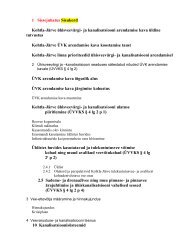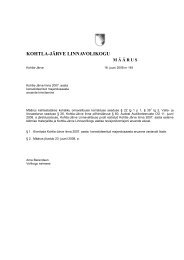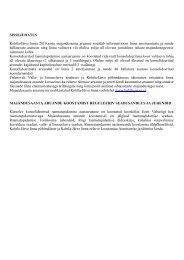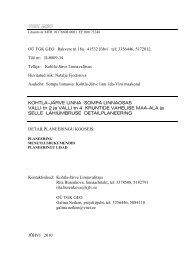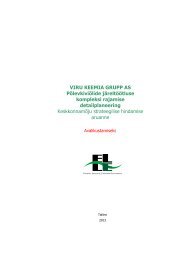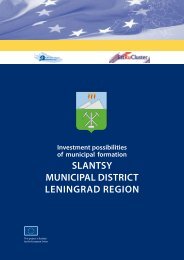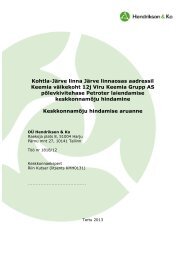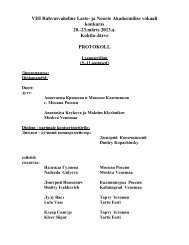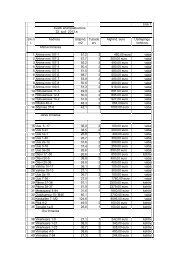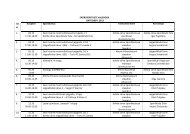FINAL CLUSTER ANALYSIS - Kohtla-Järve
FINAL CLUSTER ANALYSIS - Kohtla-Järve
FINAL CLUSTER ANALYSIS - Kohtla-Järve
Create successful ePaper yourself
Turn your PDF publications into a flip-book with our unique Google optimized e-Paper software.
Final Cluster Analysis<br />
11<br />
The following European trends and drivers of<br />
4 selected cluster sectors have been synthesised<br />
in order to establish proper foresight<br />
picture of sector competitiveness. Threats<br />
and challenges have also been considered<br />
in order to complete foresight analysis. The<br />
gathered information is coming from the<br />
various sources, such as European Commission,<br />
European Monitoring Centre on<br />
Change any other perspective studies and<br />
researches that contain foresight information<br />
on selected sectors.<br />
34<br />
Foresight on<br />
selected clusters,<br />
trends and<br />
drivers<br />
11.1. hosPItalItY sector<br />
The key drivers in the hospitality sector are presented below<br />
with a brief description.<br />
socIologIcal DrIvers<br />
Key sociological drivers include the ageing of populations<br />
in many of the EU Member States, combined with changing<br />
lifestyles and tastes among workers and consumers<br />
across the EU. The ageing of the workforce and the increasing<br />
levels of educational attainment among young people<br />
can be expected to aff ect the structure of the workforce<br />
and its working conditions. Population ageing is also likely<br />
to lead to a change in consumer preferences and, hence,<br />
in the services supplied. Changing consumer lifestyles and<br />
tastes, brought on by improvements in living and working<br />
conditions, evolving social conventions, economic development<br />
and new technology, are creating more informed<br />
and demanding consumers, who are also becoming more<br />
organised as a collective force.<br />
technologIcal DrIvers<br />
On the supply side, the prevalence of information technologies<br />
over the last 20 years, and in particular the last 10 years,<br />
has allowed enterprises to be more fl exible by allowing<br />
them to manage and monitor both their resources and supply<br />
chains better. Information technologies also facilitate the<br />
greater customisation of services on off er. For consumers,<br />
it has led to an expansion of choice of information providers<br />
and where they spend their money. It is also changing<br />
consumers’ shopping habits and the way they interact with<br />
enterprises. Beyond developments in information and communication<br />
technologies (ICT), new kitchen and production<br />
technologies are leading to structural changes in catering<br />
establishments by allowing the outsourcing of many operations<br />
and the simplifi cation of kitchen processes, but with<br />
largely negative eff ects for the workforce.<br />
© Narva Business Advisory Services Foundation, St. Petersburg Information and Analytical Center, Synergy International Ltd. 2008



